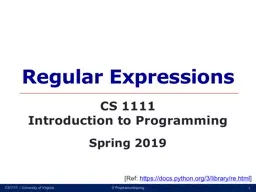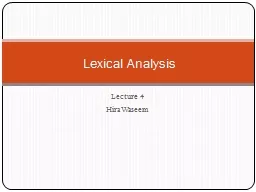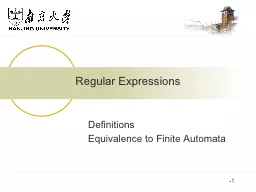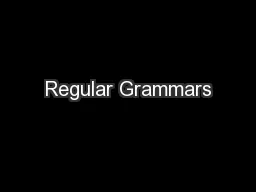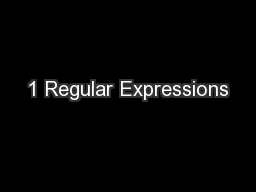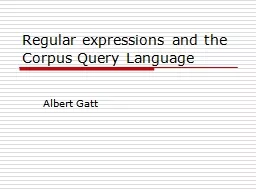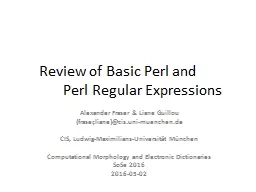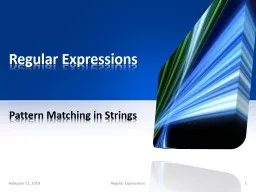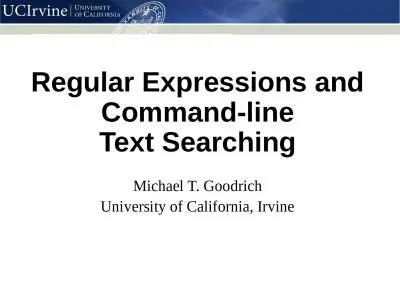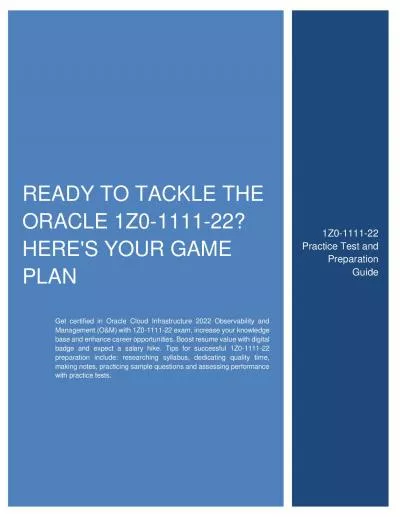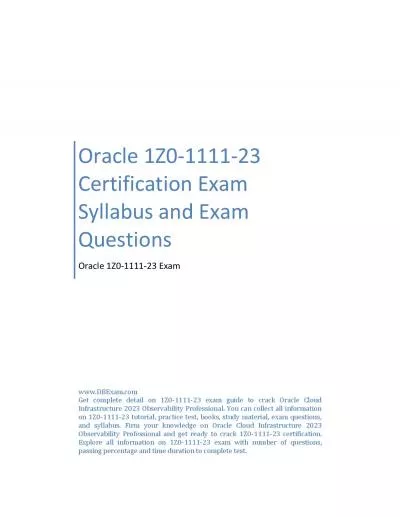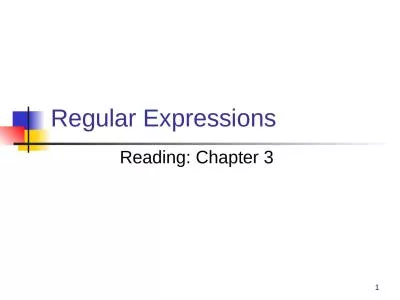PPT-Regular Expressions CS 1111
Author : genesantander | Published Date : 2020-06-23
Introduction to Programming Spring 2019 Ref https docspythonorg 3library rehtml Overview What are regular expressions Why and when do we use regular expressions
Presentation Embed Code
Download Presentation
Download Presentation The PPT/PDF document "Regular Expressions CS 1111" is the property of its rightful owner. Permission is granted to download and print the materials on this website for personal, non-commercial use only, and to display it on your personal computer provided you do not modify the materials and that you retain all copyright notices contained in the materials. By downloading content from our website, you accept the terms of this agreement.
Regular Expressions CS 1111: Transcript
Download Rules Of Document
"Regular Expressions CS 1111"The content belongs to its owner. You may download and print it for personal use, without modification, and keep all copyright notices. By downloading, you agree to these terms.
Related Documents

